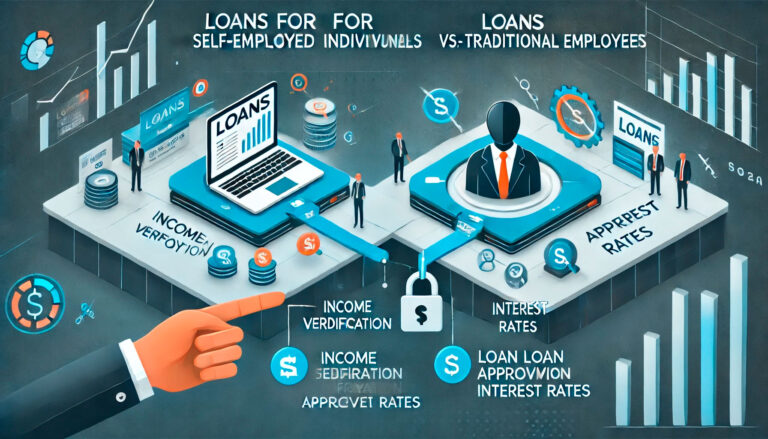
In the fast-paced world of consumer finance, speed and efficiency are paramount. As consumers increasingly demand quicker access to loans and financial products, financial institutions are constantly seeking ways to streamline their processes. One of the most significant advancements in recent years has been the adoption of digital identification technology. By allowing lenders to verify the identities of borrowers online in real-time, digital identification is transforming how consumer loans are processed. This technology not only accelerates the approval process but also enhances security, reduces fraud, and improves the overall customer experience.
The Role of Digital Identification in Loan Processing
Traditionally, loan processing involved a lengthy process of document verification and identity checks. Borrowers would often need to visit a branch in person, present physical identification, and submit various forms of documentation. This process could take days or even weeks, delaying the approval of loans and creating friction between lenders and borrowers. However, with the introduction of digital identification solutions, this entire process has been revolutionized. Digital identification enables lenders to verify a borrower’s identity in a matter of minutes, eliminating the need for in-person meetings and reducing the time spent on manual paperwork.
At its core, digital identification relies on technology such as biometric verification, facial recognition, and document scanning to verify a borrower’s identity. By integrating these technologies into the loan application process, lenders can quickly and securely confirm that the person applying for the loan is who they claim to be. This real-time verification significantly reduces the time spent on manual checks, allowing lenders to process loans more quickly and efficiently.
Speed and Efficiency of Loan Approvals
One of the primary advantages of using digital identification in consumer loan processing is the speed with which loans can be approved. In a traditional loan process, it can take days or even weeks to gather all the necessary documentation, validate the information, and confirm the borrower’s identity. With digital identification, however, the process is expedited. Borrowers can submit their application online, verify their identity in real-time, and have their loan approved within a matter of minutes. This quick turnaround time is a significant improvement over traditional loan processing methods, which often involve waiting for paperwork to be submitted and manually reviewed.
The ability to process loans faster also benefits borrowers who are in urgent need of funds. Whether it’s for an emergency medical expense, home repairs, or a car purchase, the quick approval of a loan can make all the difference. By using digital identification, lenders are able to provide customers with faster access to the funds they need without the delays typically associated with traditional loan processing.

Enhanced Security and Fraud Prevention
Another critical benefit of digital identification in loan processing is the enhanced security it offers. Fraud prevention is a major concern for lenders, especially in an age where cybercrime is on the rise. By leveraging technologies such as biometric authentication, lenders can ensure that the borrower is the legitimate applicant and not an identity thief. Facial recognition, fingerprint scanning, and other biometric methods are highly effective at preventing fraudulent applications, as they provide an additional layer of security that traditional methods simply cannot match.
Digital identification also reduces the risk of human error, which can sometimes occur during manual verification processes. With automated identity verification, the potential for mistakes is minimized, ensuring that only legitimate applicants are approved for loans. This increased security not only benefits lenders by reducing the risk of fraud but also protects borrowers from the potential consequences of having their identity stolen or misused.
Improved Customer Experience
The speed and efficiency of digital identification also contribute to an improved customer experience. Consumers today expect convenience and ease when applying for financial products. Digital identification allows borrowers to complete the entire loan application process from the comfort of their own homes, without the need to visit a branch or submit physical documentation. This level of convenience is highly appealing, particularly for younger generations who are accustomed to handling most of their financial activities online.
Additionally, the use of digital identification simplifies the loan application process by reducing the amount of paperwork involved. Borrowers no longer need to worry about gathering and submitting a multitude of documents, such as proof of income, identity cards, or utility bills. Instead, they can verify their identity quickly and easily through their smartphones or computers. This streamlined process reduces the administrative burden for both the lender and the borrower, leading to a more efficient and satisfying experience for everyone involved.

Cost Savings for Lenders
Digital identification not only speeds up the loan processing time and enhances security but also helps lenders reduce operational costs. In the traditional loan processing system, lenders often rely on a large workforce to manually verify documents, check identities, and review loan applications. This process is time-consuming and costly. By integrating digital identification technology into their systems, lenders can automate many of these tasks, leading to significant cost savings. The reduced need for human intervention allows lenders to allocate their resources more efficiently, ultimately improving their profitability and enabling them to offer more competitive loan products to consumers.
Furthermore, digital identification can help lenders streamline other aspects of their operations, such as customer support. With automated identity verification in place, lenders can reduce the number of inquiries and issues that arise during the loan application process, leading to a smoother overall experience for both customers and employees. This can free up staff to focus on more complex tasks, improving the efficiency of the entire loan processing system.
The Future of Digital Identification in Loan Processing
As technology continues to evolve, the role of digital identification in consumer loan processing is likely to expand even further. We can expect to see more advanced biometric technologies, such as voice recognition and retina scanning, integrated into the loan application process, offering even greater levels of security and convenience. Additionally, as consumers become more comfortable with digital financial services, the demand for faster and more efficient loan processing will likely continue to grow, prompting lenders to adopt more sophisticated identification solutions.
Furthermore, the ongoing development of artificial intelligence (AI) and machine learning algorithms will enable lenders to make even more accurate and personalized loan decisions based on a borrower’s digital footprint. By combining digital identification with AI-driven insights, lenders will be able to assess the creditworthiness of borrowers more effectively, leading to better outcomes for both lenders and borrowers.
Conclusion
Digital identification is transforming the consumer loan processing landscape, providing significant benefits for both borrowers and lenders. By enabling faster loan approvals, enhancing security, and improving the overall customer experience, digital identification technology is helping financial institutions meet the growing demand for efficiency and convenience. As the technology continues to evolve, we can expect even greater advancements in the speed and security of loan processing, making it easier for consumers to access the funds they need while offering lenders a more streamlined and cost-effective way to operate. Ultimately, digital identification is not just a trend but a crucial component of the future of consumer finance.


